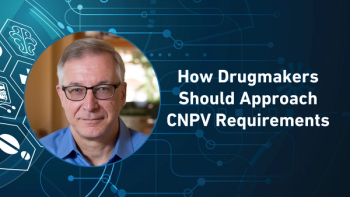
Senate passes HR 3204, the Drug Quality and Security Act
Pharma track-and-trace arrives, but will take years to be fully implemented; drug compounding also gets a new regulatory framework
It was just about five years ago (September 2008) that, during a tense, heavily attended meeting of the California Board of Pharmacy, the decision was made to delay—until 2015—a state-level rule to require strict traceability of pharmaceutical packages from point of manufacturer to the retail- or hospital-pharmacy shelf, which had been set to go into effect in January 2011. In the intervening years, California has stuck to the 2015 deadline and that, in large part, was the clarifying point that pushed manufacturers, wholesalers and others to develop an alternative plan—especially one that embodied a national, rather than state-by-state, structure.
Now, by means of a voice vote (indicating perfunctory acceptance of the legislation), that has come to pass, with Senate passage of HR 3204, the
The most immediate effects:
- With the explicit acceptance (written into its legislation) of California, DQSA now invalidates the California traceability rules and timetable; rather than a 2015 deadline to begin applying ID codes to pharma packages, the process will begin in 2017; and a full-blown electronic tracking system won’t be required until around 2023. DQSA has a “uniform national policy” clause that precludes “more stringent” state actions. Tracing transactions at the lot level (as opposed to the item level—a source of much industry hand—wringing) will commence after January 1, 2015.
- There is now a national registration/licensure standard for US wholesalers (which, to the extent that they are involved in drug distribution, could involve manufacturers as well), repackagers, and—for the first time in a drug-distribution context—third-party logistics providers (3PLs). These licenses will build on already-existing state-level statutes; while aspects of this requirement will be effective by January 2015—which puts some time pressure on FDA to issue relevant regulations—the formal date for licensure standards is two years after the bill becomes law, or, presumably, November 2015.
- Requirements for compounding pharmacies oblige FDA to set up a voluntary program under which high-volume compounding pharmacies can register as licensed “outsourcing facilities” and pay fees (dedicated to inspection and audit procedures), beginning in October 2014. There will also be multiple reporting and coordinating requirements between FDA and state boards of pharmacy; a national registry of licensed outsourcing facilities; and new labeling requirements for compounded products.
The 150-page DQSA is unusually explicit about many aspects of pharmaceutical distribution practices but, as is the case for most federal legislation, the real activity begins after FDA issues proposed and then final regulations. The first of several public meetings is to be held a year from passage of the law, and pilot demonstrations are to be held for evolving industry practices.
Supply-chain competition?
Without question, it’s now open season for packaging-line equipment vendors, IT networking providers and industry consultants to begin pitching their services to manufacturers and wholesalers; retail pharmacy will follow shortly thereafter. Most multinational manufacturers—including some generics producers—have already equipped at least one of their packaging lines, and a few have proceeded to multiple lines. Contract packagers are getting on board as well, as have some 3PLs.
Some of this activity will translate into competitive advantage for some manufacturers, but it remains to be seen how much of a spur to action that will be ahead of the federal deadlines. The Big Three wholesalers have already stated that they will require manufacturers to supply transaction information electronically (which goes beyond the paper-or-electronic requirements in DQSA). “Wholesalers will soon have mass quantities of serialized information, and we haven’t had that before,” notes Elizabeth Gallenagh, general counsel for HDMA. “The ability to test data handling will be an advantage to industry overall.”
When retailers begin putting pressure on distributors and logistics providers to supply transaction information, that will spur them forward as well. If such private-sector practices don’t directly translate into competitive advantage, they will likely put a cost pressure on manufacturers and distributors who will rely on costly manual processes. The era of taking a wait-and-see attitude to track-and-trace requirements is now over. “There’s a lot of potential for entrepreneurs to push the system forward,” suggests Allan Coukell, senior director of drugs and medical devices at Pew Charitable Trusts (Washington DC), a policy group that has been involved with pharma supply-chain integrity issues.
Newsletter
Stay ahead in the life sciences industry with Pharmaceutical Commerce, the latest news, trends, and strategies in drug distribution, commercialization, and market access.





